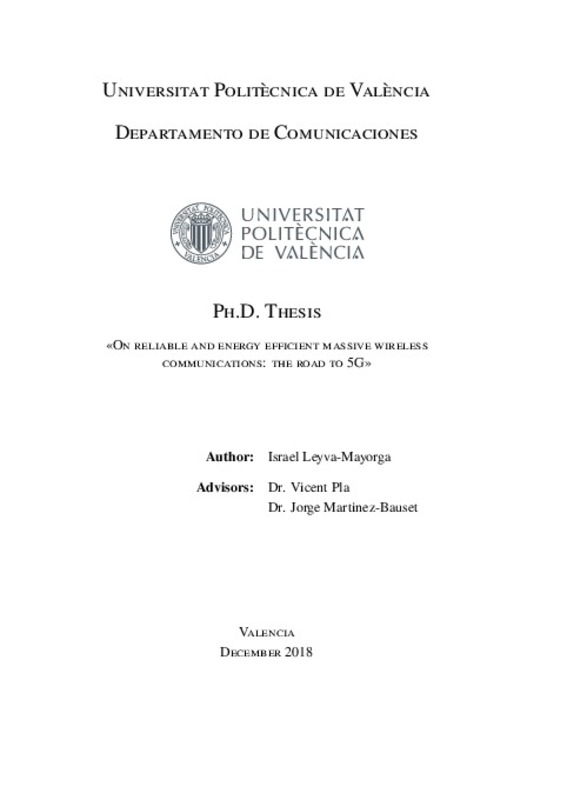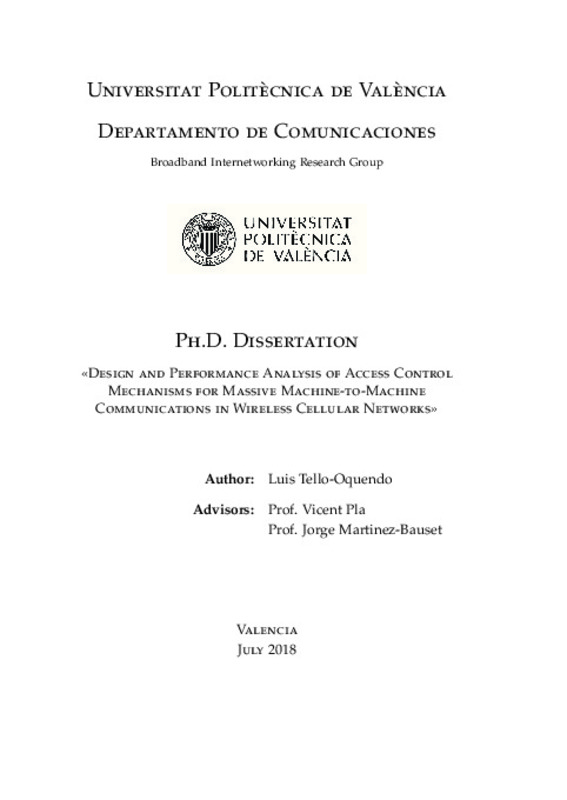JavaScript is disabled for your browser. Some features of this site may not work without it.
Buscar en RiuNet
Listar
Mi cuenta
Estadísticas
Ayuda RiuNet
Admin. UPV
Busy tone-based channel access control for cooperative communication
Mostrar el registro sencillo del ítem
Ficheros en el ítem
| dc.contributor.author | Xie, Kun
|
es_ES |
| dc.contributor.author | Xie, Kexin
|
es_ES |
| dc.contributor.author | He, Shiming
|
es_ES |
| dc.contributor.author | Zhang, Daqiang
|
es_ES |
| dc.contributor.author | Wen, Jigang
|
es_ES |
| dc.contributor.author | Lloret, Jaime
|
es_ES |
| dc.date.accessioned | 2016-06-03T11:35:38Z | |
| dc.date.available | 2016-06-03T11:35:38Z | |
| dc.date.issued | 2015-10 | |
| dc.identifier.uri | http://hdl.handle.net/10251/65204 | |
| dc.description.abstract | Cooperative communication has attracted many research interests in recent years because it can take advantage of the broadcast nature of wireless communications and spatial diversity to improve the network performance. Although relay nodes in cooperative communications can help improve the performance, relay nodes may cause the serious competition on wireless channel accessing, which makes the channel access problem in cooperative communications challenging. To solve this problem, based on cooperative triple busy tone multiple access, this paper proposes a media access control scheme that concurrently combines the request to send/clear to send and busy tone with a proper tone duration timer. In the scheme, three busy tones are proposed to coordinate the nodes in the network to transmit packets, which is further utilised to solve the hidden terminal and exposed terminal problems in cooperative communications. Among the three busy tones, the cooperative busy tone is set according to the relay's signal-to-noise ratio. Based on the busy tone, this paper also proposes a bandwidth efficient relay selection algorithm, in which the source node can select the best relay in a distributed way by monitoring the busy tone. The simulation results demonstrate that the proposed scheme can largely reduce the blocking time and improve the channel utilisation in wireless cooperative networks. Copyright (c) 2014 John Wiley & Sons, Ltd. | es_ES |
| dc.description.sponsorship | The work is supported by the National Key Technology R&D Program of China under grant no. 2012BAD35B06, the open Foundation of State Key Laboratory of Networking and Switching Technology (Beijing University of Posts and Telecommunications) under grant no. SKLNST-2013-1-04, the Prospective Research Project on Future Networks (Jiangsu Future Networks Innovation Institute) under grant no. BY2013095-4-06, and the National Natural Science Foundation of China under grant nos. 6113305, 61173167 and 61103182, the Fok Ying Tung Education Foundation (No. 142006), and Fundamental Research Funds for the Central Universities (No. 2100219043). | en_EN |
| dc.language | Inglés | es_ES |
| dc.publisher | Wiley | es_ES |
| dc.relation.ispartof | Transactions on Emerging Telecommunications Technologies | es_ES |
| dc.rights | Reserva de todos los derechos | es_ES |
| dc.subject | Access control | es_ES |
| dc.subject | Local area networks | es_ES |
| dc.subject | Medium access control | es_ES |
| dc.subject | Problem solving | es_ES |
| dc.subject | Relay control systems | es_ES |
| dc.subject | Signal to noise ratio | es_ES |
| dc.subject | Wireless telecommunication systems | es_ES |
| dc.subject | Bandwidth efficient | es_ES |
| dc.subject | Busy tone multiple access | es_ES |
| dc.subject | Exposed terminal problem | es_ES |
| dc.subject | Media access control | es_ES |
| dc.subject | Request to send/clear to sends | es_ES |
| dc.subject | Wireless cooperative networks | es_ES |
| dc.subject.classification | INGENIERIA TELEMATICA | es_ES |
| dc.title | Busy tone-based channel access control for cooperative communication | es_ES |
| dc.type | Artículo | es_ES |
| dc.identifier.doi | 10.1002/ett.2856 | |
| dc.relation.projectID | info:eu-repo/grantAgreement/NKRDPC//2012BAD35B06/ | es_ES |
| dc.relation.projectID | info:eu-repo/grantAgreement/NSFC//61103182/ | es_ES |
| dc.relation.projectID | info:eu-repo/grantAgreement/Jiangsu Future Networks Innovation Institute//BY2013095-4-06/ | es_ES |
| dc.relation.projectID | info:eu-repo/grantAgreement/NSFC//6113305/ | es_ES |
| dc.relation.projectID | info:eu-repo/grantAgreement/SKLNST//SKLNST-2013-1-04/ | es_ES |
| dc.relation.projectID | info:eu-repo/grantAgreement/NSFC//61173167/ | es_ES |
| dc.relation.projectID | info:eu-repo/grantAgreement/FYTEF//142006/ | es_ES |
| dc.relation.projectID | info:eu-repo/grantAgreement/Fundamental Research Funds for the Central Universities//2100219043/ | es_ES |
| dc.rights.accessRights | Cerrado | es_ES |
| dc.contributor.affiliation | Universitat Politècnica de València. Departamento de Comunicaciones - Departament de Comunicacions | es_ES |
| dc.contributor.affiliation | Universitat Politècnica de València. Instituto de Investigación para la Gestión Integral de Zonas Costeras - Institut d'Investigació per a la Gestió Integral de Zones Costaneres | es_ES |
| dc.description.bibliographicCitation | Xie, K.; Xie, K.; He, S.; Zhang, D.; Wen, J.; Lloret, J. (2015). Busy tone-based channel access control for cooperative communication. Transactions on Emerging Telecommunications Technologies. 26(10):1173-1188. https://doi.org/10.1002/ett.2856 | es_ES |
| dc.description.accrualMethod | S | es_ES |
| dc.relation.publisherversion | http://dx.doi.org/10.1002/ett.2856 | es_ES |
| dc.description.upvformatpinicio | 1173 | es_ES |
| dc.description.upvformatpfin | 1188 | es_ES |
| dc.type.version | info:eu-repo/semantics/publishedVersion | es_ES |
| dc.description.volume | 26 | es_ES |
| dc.description.issue | 10 | es_ES |
| dc.relation.senia | 310981 | es_ES |
| dc.identifier.eissn | 2161-3915 | |
| dc.contributor.funder | Jiangsu Future Networks Innovation Institute | es_ES |
| dc.contributor.funder | State Key Laboratory of Networking and Switching Technology | es_ES |
| dc.contributor.funder | National Key Research and Development Program of China | es_ES |
| dc.contributor.funder | National Natural Science Foundation of China | es_ES |
| dc.contributor.funder | Fundamental Research Funds for the Central Universities | es_ES |
| dc.contributor.funder | Fok Ying Tung Education Foundation | |
| dc.description.references | Boche, H., & Jorswieck, E. A. (2007). On the performance optimization in multiuser MIMO systems. European Transactions on Telecommunications, 18(3), 287-304. doi:10.1002/ett.1155 | es_ES |
| dc.description.references | Laneman, J. N., Tse, D. N. C., & Wornell, G. W. (2004). Cooperative Diversity in Wireless Networks: Efficient Protocols and Outage Behavior. IEEE Transactions on Information Theory, 50(12), 3062-3080. doi:10.1109/tit.2004.838089 | es_ES |
| dc.description.references | Manhas EB Brante G Souza RD Pellenz ME Energy-efficient cooperative image transmission over wireless sensor networks WCNC, Paris, France 2012 2014 2019 | es_ES |
| dc.description.references | Ghelber, B., & Dabora, R. (2012). The value of cooperation between relays in the multiple-access channel with multiple relays. Transactions on Emerging Telecommunications Technologies, 23(4), 341-359. doi:10.1002/ett.1543 | es_ES |
| dc.description.references | Zimmermann, E., Herhold, P., & Fettweis, G. (2005). On the performance of cooperative relaying protocols in wireless networks. European Transactions on Telecommunications, 16(1), 5-16. doi:10.1002/ett.1028 | es_ES |
| dc.description.references | Sergi, S., Pancaldi, F., & Vitetta, G. M. (2011). Cross-layer design for double-string cooperative communications in wireless ad-hoc networks. European Transactions on Telecommunications, 22(8), 471-486. doi:10.1002/ett.1497 | es_ES |
| dc.description.references | Moualeu JM Hamouda W Xu H Takawira F Cross-layer relay selection criterion for cooperative-diversity networks ICC, Ottawa, ON, Canada 2012 5075 5079 | es_ES |
| dc.description.references | Hasan Z Jamalipour A Bhargava VK Cooperative communication and relay selection under asymmetric information WCNC, Paris, France 2012 2373 2378 | es_ES |
| dc.description.references | Wang B Han Z Liu KJR Distributed relay selection and power control for multiuser cooperative communication networks using buyer/seller game INFOCOM, Anchorage, AK, United states 2007 544 552 | es_ES |
| dc.description.references | Chen D Ji H Li X An energy-efficient distributed relay selection and power allocation optimization scheme over wireless cooperative networks ICC, Kyoto, Japan 2011 1 5 | es_ES |
| dc.description.references | Feng J Zhang R Ng SX Hanzo L Relay selection for energy-efficient cooperative media access control WCNC, IEEE Cancun, Mexico 2011 287 292 | es_ES |
| dc.description.references | Zhang G Cong L Ding E Yang K Yang X Fair and efficient resource sharing for selfish cooperative communication networks using cooperative game theory ICC, IEEE, Kyoto, Japan 2011 1 5 | es_ES |
| dc.description.references | Liu, P., Tao, Z., Narayanan, S., Korakis, T., & Panwar, S. (2007). CoopMAC: A Cooperative MAC for Wireless LANs. IEEE Journal on Selected Areas in Communications, 25(2), 340-354. doi:10.1109/jsac.2007.070210 | es_ES |
| dc.description.references | Khalid, M., Wang, Y., Ra, I., & Sankar, R. (2011). Two-Relay-Based Cooperative MAC Protocol for Wireless Ad hoc Networks. IEEE Transactions on Vehicular Technology, 60(7), 3361-3373. doi:10.1109/tvt.2011.2159872 | es_ES |
| dc.description.references | Sayed, S. G., Yang, Y., & Xu, J. (2010). BTAC: A Busy Tone Based Cooperative MAC Protocol for Wireless Local Area Networks. Mobile Networks and Applications, 16(1), 4-16. doi:10.1007/s11036-010-0267-1 | es_ES |
| dc.description.references | Sayed S Yang Y Guo H Hu H Analysis of energy efficiency of a busy tone based cooperative MAC protocol for multi-rate WLANs WCNC, IEEE, Sydney, NSW, Australia 2010 1 6 | es_ES |
| dc.description.references | Shan H Wang P Zhuang W Wang Z Cross-layer cooperative triple busy tone multiple access for wireless networks GLOBECOM, IEEE New Orleans, LA, United states 2008 1 5 | es_ES |
| dc.description.references | Liu Y Liu K Zeng F A relay-contention-free cooperative MAC protocol for wireless networks CCNC, IEEE, Las Vegas, NV, United states 2011 203 207 | es_ES |
| dc.description.references | Abramson N The ALOHA system: another alternative for computer communications Proceedings of the November 17-19, 1970, Fall Joint Computer Conference, ACM, Houston, TX 1970 281 285 | es_ES |
| dc.description.references | Bianchi G Fratta L Oliveri M Performance evaluation and enhancement of the CSMA/CA MAC protocol for 802.11 wireless LANs PIMRC Taipei, Taiwan 1996 392 396 | es_ES |
| dc.description.references | Haas, Z. J., & Jing Deng. (2002). Dual busy tone multiple access (DBTMA)-a multiple access control scheme for ad hoc networks. IEEE Transactions on Communications, 50(6), 975-985. doi:10.1109/tcomm.2002.1010617 | es_ES |
| dc.description.references | Rajeswari, A., & P.T, K. (2011). A Novel Energy Efficient Routing Protocols for Wireless Sensor Networks Using Spatial Correlation Based Collaborative Medium Access Control Combined with Hybrid MAC. Network Protocols and Algorithms, 3(4). doi:10.5296/npa.v3i4.1296 | es_ES |
| dc.description.references | Chen Y Li B HCRBT: a dual-busy-tone-assisted MAC protocol with channel reservation for ad hoc networks WICOM, IEEE, Wuhan, China 2011 1 4 | es_ES |
| dc.description.references | Li Z Liu K A multiple-recipient-based cooperative MAC protocol for wireless ad hoc networks 2013 IEEE 5th International Symposium on Microwave, Antenna, Propagation and EMC Technologies for Wireless Communications (MAPE), Chengdu, China 2013 59 64 | es_ES |
| dc.description.references | Sklar, B. (1997). Rayleigh fading channels in mobile digital communication systems. I. Characterization. IEEE Communications Magazine, 35(9), 136-146. doi:10.1109/35.620535 | es_ES |






![[Cerrado]](/themes/UPV/images/candado.png)



